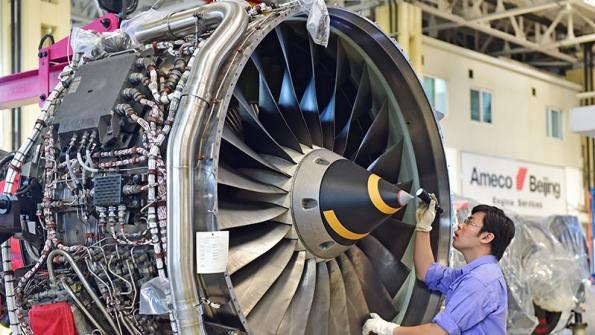
In September of this year, Ameco Beijing became the 10th member of the GTF MRO network. The Air China-Lufthansa Technik joint venture will repair the PW1100G-JM powering A320neo family from its engine shop in Beijing.
One year ago, global engine overhaul capacity was still under severe strain due to parts shortages from the OEMs and a scramble for current-generation narrowbody equipment following the grounding of the 737 Max and, to a lesser extent, delays to A321neo deliveries.
That situation has now reversed, with aircraft parked and costly engine overhauls being cancelled and deferred.
“We are currently seeing deferrals for -5B/-7B MRO mirroring the flying/operating profile and a trend towards budget-driven decisions,” a spokesperson for MTU tells Aviation Week.
Lufthansa Technik tells a similar story, although no-one in the industry can predict with any certainty when overhaul demand will return.
Before it does, airlines are likely to make do with mobile and on-wing services, cannibalizing equipment from idle aircraft, and using spare engines.
Two big questions for the future concern: how much overhaul demand lost in the next year or more will re-materialize in later years; and how ready the MRO sector will be to cater for any resurgence.
“For the newer types like the -5B and -7B the business will return; the question is only when, but the older versions of the V2500 or the -5A might not be seen as planned just a few months ago,” says Dietmar Focke, head of engine services at Lufthansa Technik.
Meanwhile, regarding CFM56-5B/7B overhauls, MTU predicts that “the majority of the work will likely be backloaded to later years”.
If this does happen it will be interesting to see how quickly engine overhaul providers and associated supply chain can ramp their capacity back up after a period of inactivity.
One bonus is that there is likely to be no shortage of quality used materials following what is expected to be a rash of asset sales and subsequent teardowns as airlines seek liquidity to weather the crisis.





